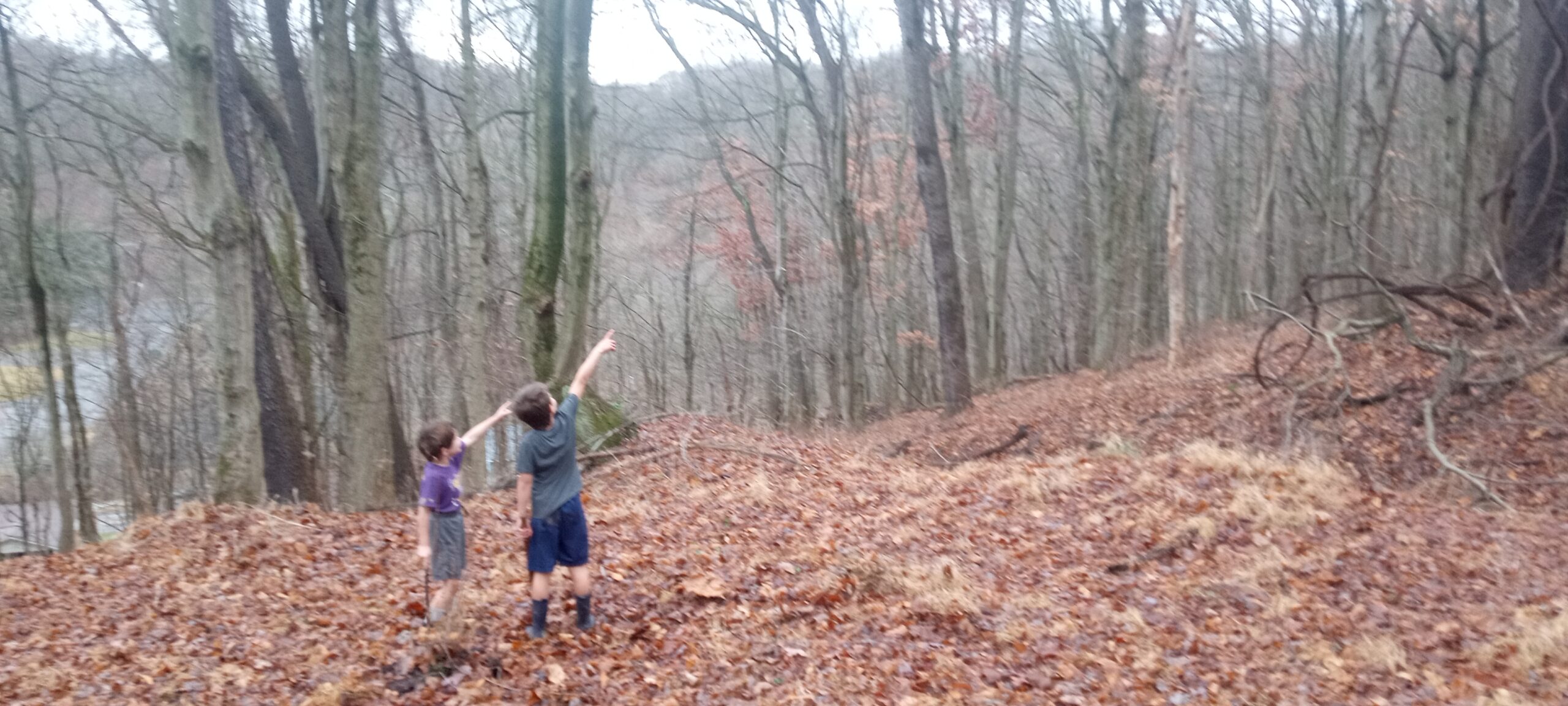What do Solomon, Aristotle, Leonardo da Vinci, Anna Botsford Comstock, John Muir, Isaac Newton, Charlotte Mason…and countless other great minds have in common? The Bible tells us that God has revealed himself through his Word, through The Word, and through the world (Romans 1:20) and these are just a few of the countless people that have been blessed through their careful study of nature. This wintry season brings really three very flexible adventures that can help you explore science and learn about God through his creation in venues as close as your own backyard.
Salt Watch
Have you ever made a nice warm bowl of soup on a winter’s day and then over-salted it? Yuck. A similar thing occurs each winter in towns across the country as rock salt is spread on roads to make them safer to drive. Did you know that excess salt, aside from being expensive, washes into the streams in your community where it has the potential to adversely affect insects, fish, reptiles, and amphibians…even months later in the summer? It attracts deer to roadsides, increasing the risk of automobile accidents. It corrodes infrastructure and ends up back in the drinking water supply where it can adversely affect people on salt-restricted diets. (And these are only a few of the dozens of impacts of applying too much rock salt—think of all the potential homeschool science fair projects right here!)
Salt Watch, the opportunity that first introduced my family to citizen science, is sponsored by the Izaak Walton League of America. It will introduce you to water quality and chemistry and is easy enough that preschoolers can be involved (although probably not for the actual water sample collection). Learn a little about salt and modern road salting practices, bundle up the family for a nature stroll to a nearby stream, and measure chloride using a free Salt Watch test kit. It takes only a few minutes to do the actual test, but it allows your homeschool science class to become part of something bigger—you are now the hands and feet of a researcher who can’t possibly visit every stream in the country. Your data may help others understand what is happening to local wildlife and it may help your community leaders to make wiser decisions. In fact, one family that we introduced Salt Watch to was so appalled by the test results in their suburb that their citizen science adventure led to a civics project as they contacted their town council!
Christmas Bird Count
Another great winter nature citizen science adventure is the Christmas Bird Count, which has occurred in communities all over the country for more than one hundred years. While Salt Watch introduces us to water quality and its impact on the little and overlooked creatures, Christmas Bird Count directs us to look up and study the birds, some of which rely on those little stream creatures as food sources. The Christmas Bird Count comes with the blessing of mentorship as you gather with experienced birders who will enthusiastically share their avian passion with your family. You may be blessed to find a young birders club for children in your community or even a Children’s Christmas Bird Count such as the phenomenal one hosted each December by the Audubon Society of Western Pennsylvania. The enthusiasm of other birders may rub off on your children and create a new hobby—it did that to one of my homeschool friends, who then passed her family’s love of birds on to mine.
As you look for the birds on the Christmas Bird Count, it’s a great opportunity to remind your children of God’s great love and provision for them, since the birds of the air are fed by our Heavenly Father and yet our value to him is so much greater (Matthew 6:26-27). Listen to the beautiful melodies as the birds sing for their Creator. And observe the shape of the bird in flight above you—an early church father once said that if a bird denies the cross, he ceases to fly and crashes to the ground. God is revealed even through the creation.
Great Backyard Bird Count
My aforementioned homeschool friend gave my children our first birdfeeder, which became the focal point of another annual homeschool citizen science adventure: the Great Backyard Bird Count. For just fifteen minutes at a stretch, as many times as we choose to in a single winter weekend, from the comfort of our sofa (or while we’re walking the dog), our observations can help researchers at Cornell Lab of Ornithology. There is so much to discover!
Do you know that chickadees, titmice, and nuthatches will be among the first to find your new birdfeeder—and once one finds it, all the rest will soon follow? What might your fifteen minutes discover? Did you know that blue jays look gray in cloudy weather? That some birds are really picky about what seeds they’ll eat and will toss perfectly good (but “unpalatable”) seeds on to the ground where larger birds like mourning doves will walk around and clean them up? That chipmunks and squirrels will also find your feeder, hang on with their feet, and proceed to stuff their cheeks with as much food as they can?[1]
I think our most stunning citizen science adventure was when we discovered a hawk, which had hidden itself in some of our bushes, suddenly explode upon the birdfeeder scene and break up the party in search of its own lunch. (That, by the way, is really a tremendous victory if your neighborhood can support enough small birds so as to then support a larger predatory bird.) The hawk, ultimately unsuccessful in his endeavor, stomped across our front yard and glared at us before flying away. My children still talk about it—it is a nature experience that has knitted them together.
These three adventures don’t require you to drive far (unless by choice) and can be done in your community no matter where you live. They provide an opportunity to observe the creation, employ those nature journals and art skills, gain some science experience, be part of something bigger than themselves by helping with someone else’s research, spark questions for their own investigation, research as deeply as their interest allows, and then at the end of the day (and hopefully at many points along the way)—sit back and exclaim, “WOW.”
“WOW. God made all of this for me. God loves me so much that he gave this beautiful creation as a gift to me. He provides for and sustains his creation—that includes me. When I share his love with others, I become part of something bigger—a community of Christ-lovers and missionaries across time and space. And (amazing grace!) it’s not the only beautiful gift that he has given me—just like the bird can soar because of the cross, so can I.”
And at the end of all our adventures, isn’t that really the point?
[1] If you don’t find the antics of chipmunks and squirrels (or deer) so entertaining, hot red pepper sauce, chili pepper flakes, and commercial products with these ingredients are typically successful deterrents.




